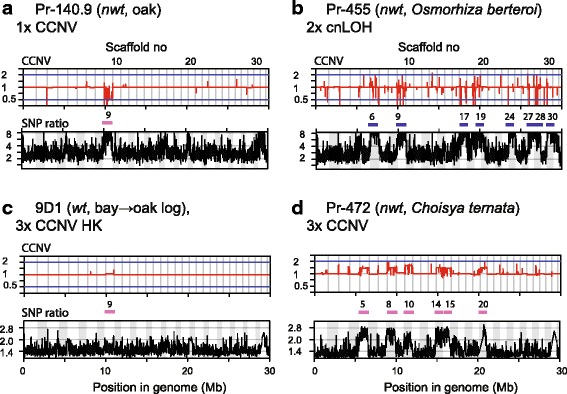Fig. 5.

Examples of chromosomal aberrations found in P. ramorum in California. See Fig. 4 for further explanation of the figure legend. A wild type euploid isolate Pr-1556 was used as a reference. a Nwt isolate Pr140.9 from Shreve oak (Q. parvula var. shrevei) is an example of monosomy (1× CCNV) at scaffold 9. b Nwt isolate Pr-455 from mountain sweet cicely Osmorhiza berteroi showing copy number neutral LOH (cnLOH) at scaffolds 6, 9, 17, 19, 24, 27, 28, and 30. c A re-isolate 9D1 from a log of coast live oak showing a small copy number change at scaffold 9 in comparison to its original isolate Pr-1556 (wt, bay) used as a reference. 9D1 is likely a heterokaryon (HK) carrying trisomic (3× CCNV) and euploid nuclei. d Nwt isolate Pr-472 from Mexican orange blossom Choisya ternata is likely a heterokaryon carrying at least two types of trisomic nuclei, one with 3× CCNV at scaffolds (5, 8, 14, 15, 20) and the other with 3× CCNV at scaffold 10 (see Fig. 6 for scaffold linkage grouping)
